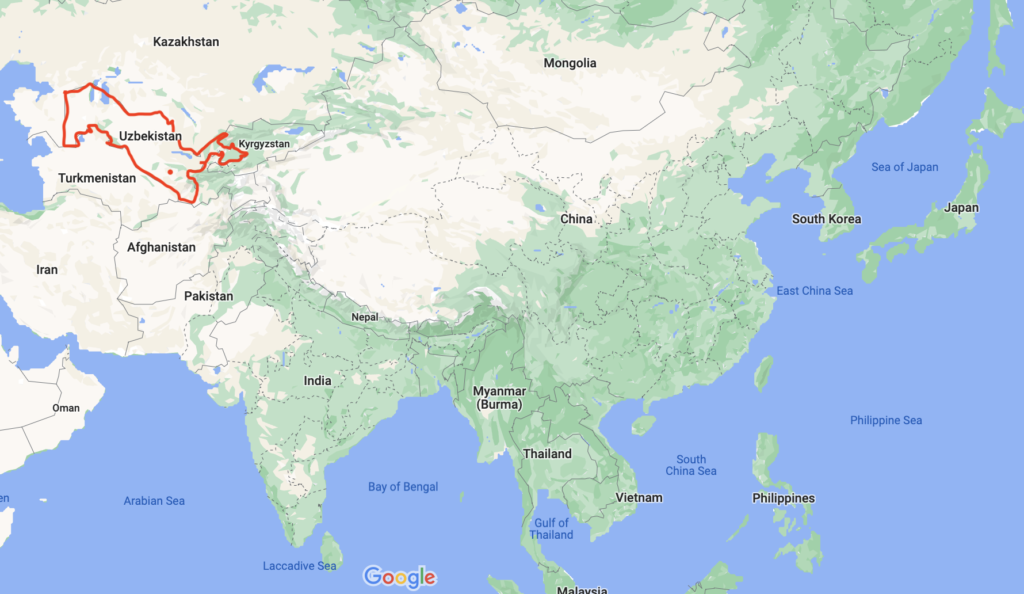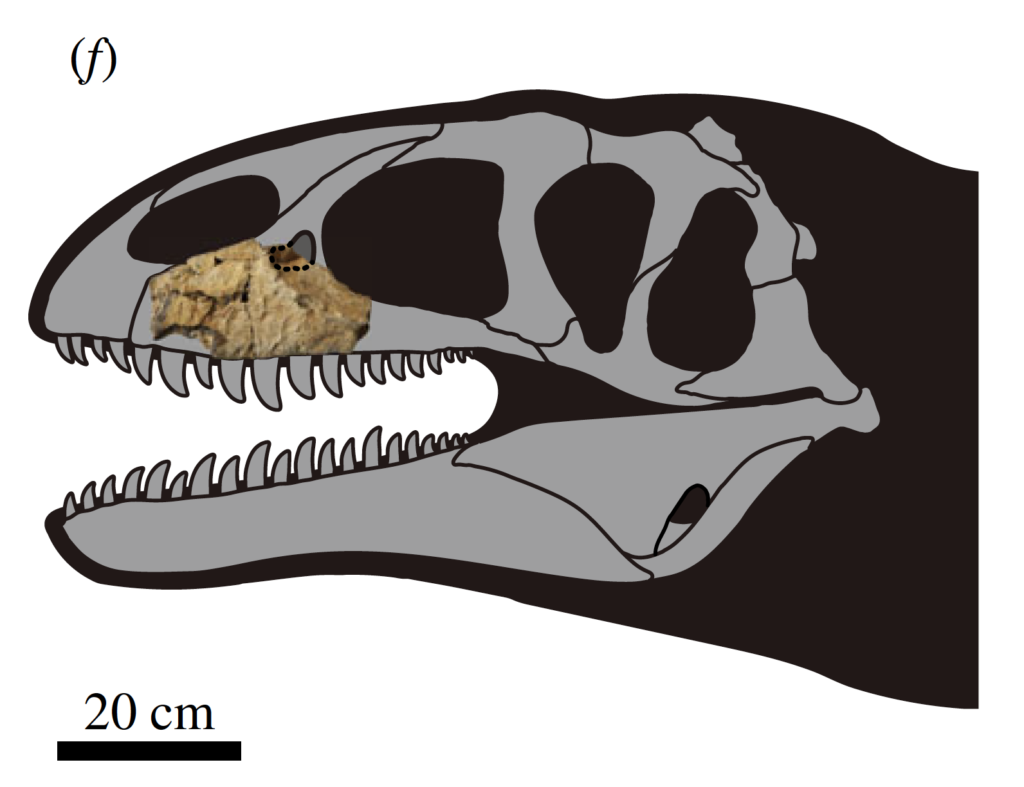Apex Predators Don’t Like to Share

It’s been a long time, friends. I have reached a point where I believe I can dedicate time to this wonderful space again. I’d like to start off with a paper published in August of 2021 about a new carcharodontosaurian dinosaur from Uzbekistan.

Carcharodontosaurs (kar-karo-DONT-o-soars) were large bodied meat-eating dinosaurs that roamed from the Late Jurassic (around 150 million years ago) to the early Late Cretaceous (around 90 million years ago). After that, carcharodontosaurs seem to fade away and others rule instead. We’ll come back to why that happens in a bit.
This new specimen of carcharodontosaur is named Ulughbegsaurus uzbekistanensis. The ‘Ulughbeg’ part of the name comes from the fifteenth century Uzbekistani astronomer Ulugh Beg, and ‘uzbekistanensis’ to indicate the country of discovery. The only piece of the dinosaur they found is a part of the maxilla, the part of the upper jaw that holds teeth.

The authors ran a computer analysis to find out what kind of dinosaur this bone belonged to based on characteristics of the bones. The analysis was run in two different ways and both agreed that it matches more closely to carcharodontosaur dinosaurs than to others.
This discovery is from a place and time that we did not have this group of dinosaurs, but more importantly is the size of the jaw piece in comparison with other predatory dinosaurs of that area. The length of the maxilla can tell you the length of the femur (the upper bone of the leg) because the two bones grow in related ways. The length of the femur can give you an estimate of the body size. This jaw tells us that the dinosaur was over 7 meters (21 feet) long and weighed over 1000 kgs (2200 pounds).
When the largest carcharodontosaurs existed, the other predators that lived alongside them were smaller. While they existed, carcharodontosaurs occupied the apex (highest point) on the food web and other larger bodied carnivores could not compete. Once the carcharodontosaurs vanished, it gave other predators a chance to fill their ‘niche’ (a niche is a role in the environment). It was only after their disappearance that tyrannosaurs became the giants Tyrannosaurus rex in North America and Tarbasaurus baatar in Asia. After the carchardontosaur extinction in South America, the abelisaurids took over. The environment only ever has space for a few giant predators.